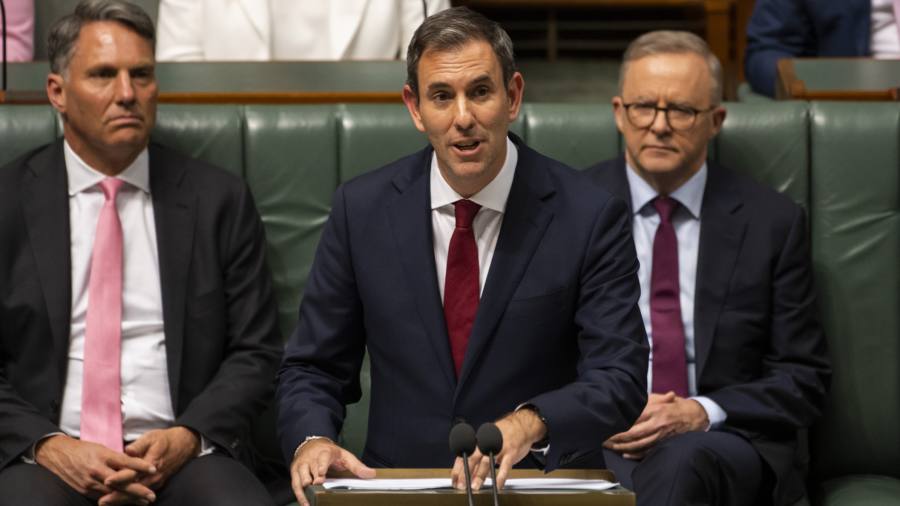
Australia’s Labor government has framed its first Budget as “hard decisions for hard times”, stressing the need to stabilise national finances amid soaring energy prices, a softening economic outlook and the surging cost of a disability support scheme.
Tuesday’s spending announcements followed a radical UK “mini”-Budget last month that proposed £45bn worth of unfunded tax cuts, caused market chaos and led to the resignation of British prime minister Liz Truss.
Anthony Albanese, prime minister, whose Labor party won power in May, said the UK had provided a “counterpoint to how a new government can perform” and that Australia would get a “stable” Budget.
Australia’s mini-Budget, delivered by Treasurer Jim Chalmers on Tuesday evening, contained A$7.5bn ($4.73bn) in cost of living measures in the form of cheaper childcare, medicines and greater levels of paid parental leave. Those measures, promised during the election campaign earlier this year, are not expected to boost inflation.
Chalmers also announced new spending on vocational education, a A$20bn energy transition fund and a pledge to build 1mn new homes by the end of the decade.
The impact of the efforts to rein in the rising cost of living will be tempered by a projected 56 per cent rise in electricity prices by the end of 2023 that clashes with Labor’s promise to reduce energy bills. Chalmers said the spike could trigger regulatory intervention.
The treasurer also said that the cost of a flagship disability scheme introduced in 2016 would rise to “hundreds of billions of dollars”. The scheme was initially expected to cost around A$21.5bn a year by 2020, gradually increasing thereafter, but a huge rise in costs and participants has transformed it into a major economic problem for the government.
The mini-Budget gave Chalmers an opportunity to heap the blame for the country’s financial position on the previous coalition government most recently led by Scott Morrison and the structural deficit it left behind. The country had suffered a “wasted decade” of “drift, decline and decay”, Chalmers said.
Angus Taylor, opposition treasurer, told the ABC broadcaster Labor had broken election campaign promises.
“They committed not only to a reduction . . . in electricity prices, they committed to relieve cost-of-living pressures on Australians. They committed to improvement in real wages. And yet we look at this Budget and it’s delivering none of that,” Taylor said.
Labor has pledged to make A$22.5bn in savings over the next four years by cutting “wasteful or unnecessary spending”. It has also committed to structural savings ahead of the next parliament to address a national debt expected to rise to A$1tn from A$534bn in 2019.
Chalmers said a revenue windfall driven by higher commodity prices, which have boosted the value of Australia’s mineral exports, and by high employment had more than halved the projected budget deficit this year to A$36.9bn. However that money would be spent on lowering debt and not on further cost of living measures.
Sean Langcake, head of macroeconomic forecasting at BIS Oxford Economics, said: “The government has shown restraint on the expenditure side in the coming years, in part motivated by concerns around stoking inflationary pressures.”
Inflation, which the treasurer said was the “primary influence” on the Budget, has been exacerbated by recent flooding. Annual consumer price inflation is expected by the government to hit 7.75 per cent by the end of the year, above the 6.1 per cent recorded in the June quarter.
Chalmers warned that Australia’s economic growth would soften to 3.25 per cent this year and further slow to 1.5 per cent next fiscal year.